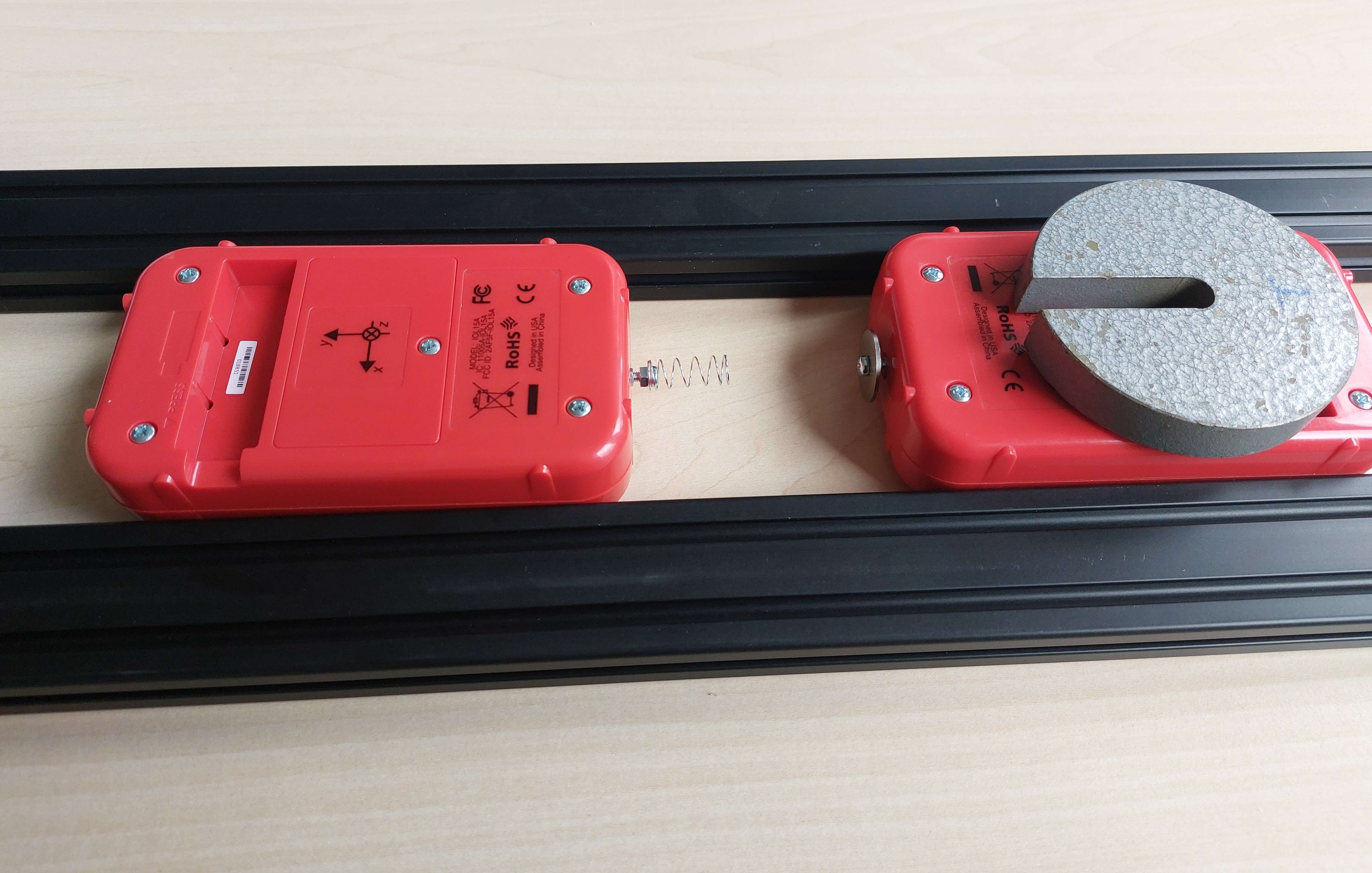17.16. Colliding with Newton’s third law#
| Author: | Freek Pols |
| Time: | 15-20 minutes |
| Age group: | 16 - 18 |
| Concepts: | Force, Newton's third law, IOLab |

Fig. 17.32 Two carts colliding. Forces acted upon by each of the carts is measured.#
Introduction#
Students find Newton’s third law difficult to grasp, as it is counterintuitive. This demonstration specifically addresses that aspect: in collisions, there are force pairs, where forces are equal (independent of masses) but opposite in direction. We use two didactic principles in this demonstration: think-pair-share and then P(E)OE.
Fig. 17.33 The forces on the IOlabs are equal in magnitude but opposite in direction. These forces also act for the same duration.#
Three Dutch physics teachers have reported on this demonstration in the Dutch Magazine for Science Teachers [].
Equipment#
2 IOlabs
Mass
Double-sided tape
Computer
Information about using the IOLab can be found here: https://www.iolab.science/getting_started.html and an introductory video below (use automated translation):
Preparation#
Ensure that you are familiar with the IOlab, that you can read out sensors, and start and stop a measurement. Connect the spring to one of the IOlabs and attach the ring to the other, see Figure 17.32. Create a track so that the motion of the IOlabs before and after the collision remains linear. The IOlab tends to go around the corner during collisions.
For the second part of demo, attach a weight to one of the IOlabs. Affix it with double-sided tape.
Procedure#
Explain what happens in this demo: one of the carts will be pushed, released and then collides with the other cart. The forces exerted by the carts (as function of time) are measured and displayed in a graph. Demonstrate the operation of the force sensor by compressing the spring while the measurement is running.
Let students predict how the two (\(F\),\(t\)) graphs will look. Let them specify specific points in the graph without giving away too much in the explanation about what might be important points. An alternative is to show a number of (\(F\),\(t\)) graphs and let the students choose and justify their choice (think).
Let students compare their graph with that of their neighbor (pair).
Ask some students to explain their graph (share).
observe: Perform the demo.
Let students provide an explanation for the similarities and differences between their own graph and the measurements.
Would it matter if the other cart was already moving before the collision? If so, why? Demonstrate it.
Now, attach the mass to one of the carts and do the entire demonstration again. Are students willing to adjust their previous thoughts?
Build on students’ responses, with some guiding questions, you can help students build a reasoning. Summarize Newton’s third law with them.
A question to check students’ understanding: A truck has broken down. Fortunately, a motorist is kind enough to push the truck to the nearest garage. Consider the following two situations:
The car accelerates to a speed of 50 km/h
The car travels at a constant speed of 50 km/h
\(F_{\text{car}}\) is the force exerted by the car on the truck. \({F_{v,w}}\) is the force exerted by the truck on the car. What applies to the force interaction between the car and the truck?:
\(F_{\text{car}}\) > \({F_{v,w}}\) in both situations
\(F_{\text{car}}\) = \({F_{v,w}}\) in both situations
\(F_{\text{car}}\) < \({F_{v,w}}\) in both situations
\(F_{\text{car}}\) > \({F_{v,w}}\) in situation 1 but not in situation 2

Fig. 17.34 The car pushes the truck to the nearest garage.#
Physics background#
Forces always come in pairs. Newton’s third law provides an even more precise description of those pairs: the magnitudes of the forces are equal and the directions are opposite. Summarized in a formula: \(F_{1→2}=-F_{2→1}\).
